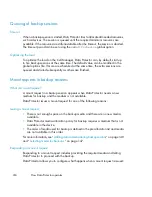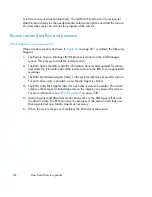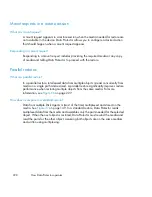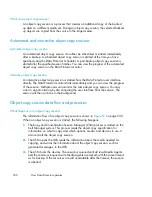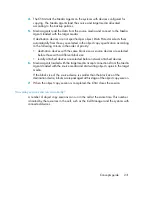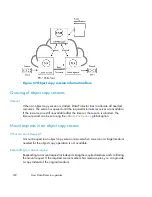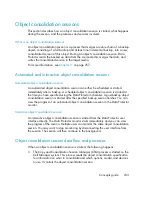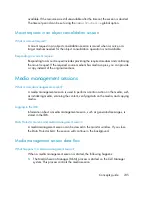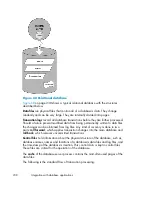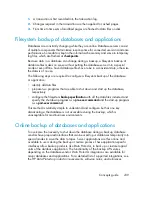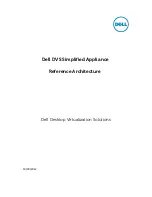
Figure 68 Relational database
Figure 68
on page 238 shows a typical relational database with the structures
described below.
Data files
are physical files that contain all of a database’s data. They change
randomly and can be very large. They are internally divided into pages.
Transaction logs
record all database transactions before they are further processed.
Should a failure prevent modified data from being permanently written to data files,
the changes can be obtained from log files. Any kind of recovery is done in two
parts:
roll forward
, which applies transaction changes into the main database and
roll back
, which removes uncommitted transactions.
Control files
hold information about the physical structure of the database, such as,
database names, names and locations of a database’s data files and log files, and
the time stamp of the database’s creation. This control data is kept in control files.
These files are critical for the operation of the database-
The
cache
of the database server process contains the most-often used pages of the
data files.
The following is the standard flow of transaction processing:
Integration with database applications
238
Summary of Contents for B6960-96035
Page 17: ...Overview of backup and automated media copy sessions 340 105 Concepts guide 17 ...
Page 20: ...20 ...
Page 22: ...Publication history 22 ...
Page 132: ...Planning your backup strategy 132 ...
Page 182: ...Media management and devices 182 ...
Page 186: ...Users and user groups 186 ...
Page 204: ...The Data Protector internal database 204 ...
Page 218: ...Figure 62 Direct SIP integration example Service management 218 ...
Page 242: ...Integration with database applications 242 ...
Page 264: ...Synthetic backup 264 ...
Page 274: ...Split mirror concepts 274 ...
Page 288: ...Snapshot concepts 288 ...
Page 344: ...Further information 344 ...
Page 402: ...Glossary 402 ...

